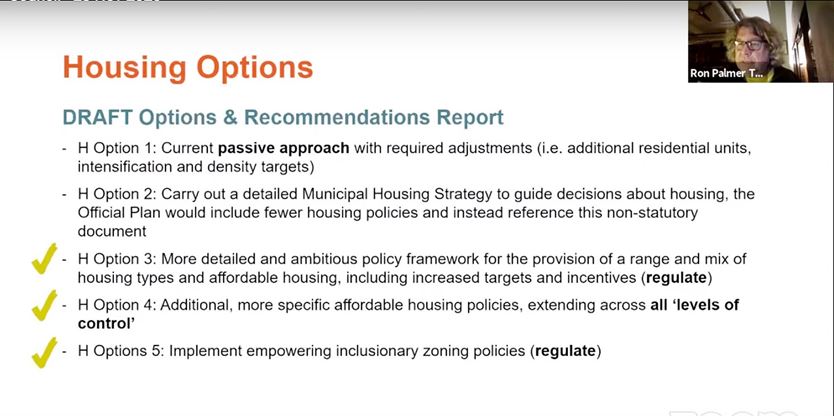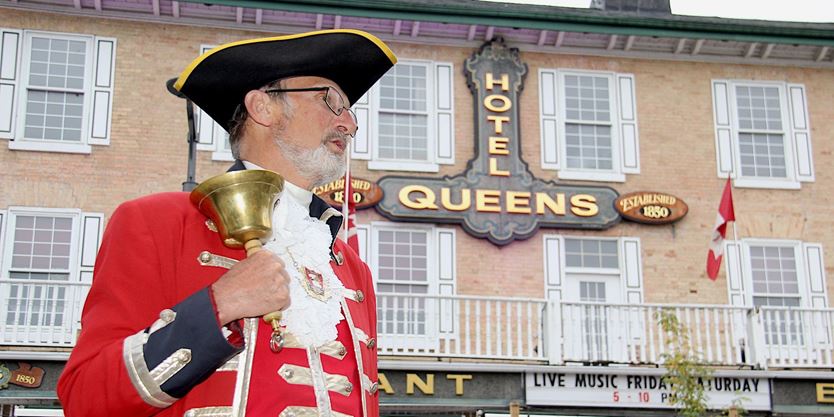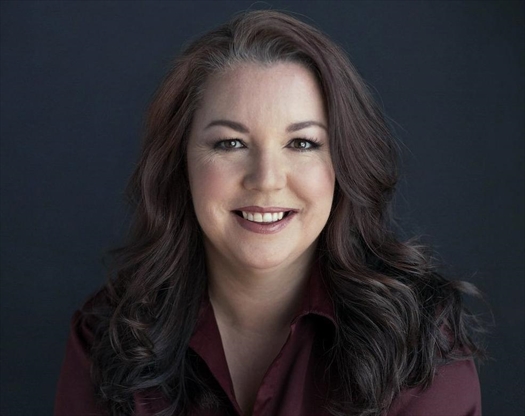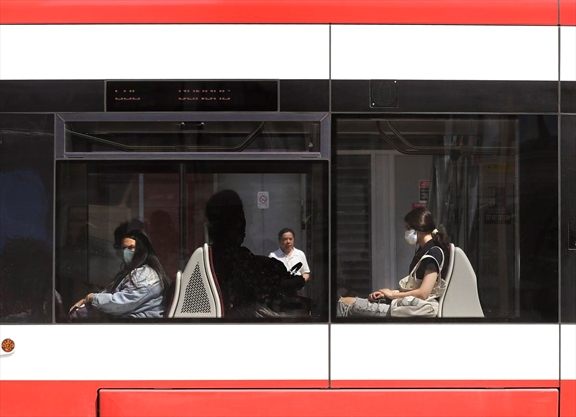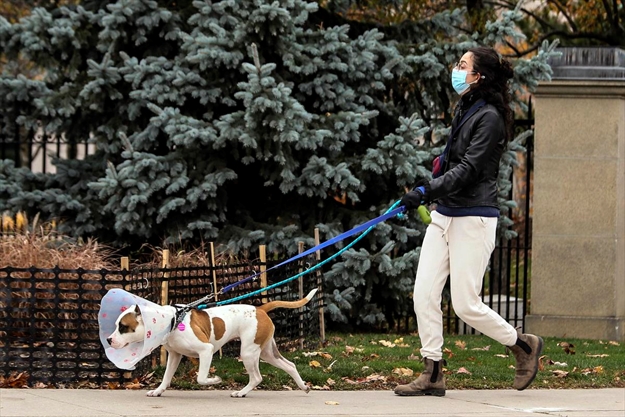The latest news from Canada and around the world Friday. This file will be updated throughout the day. Web links to longer stories if available.
11:23 p.m. President Donald Trump’s chief of staff Mark Meadows has been diagnosed with the coronavirus as the nation sets daily records for confirmed cases for the pandemic.
Two senior administration officials confirmed Friday that Meadows had tested positive for the virus, which has killed more than 236,000 Americans so far this year.

Meadows travelled with Trump in the run-up to Election Day and last appeared in public early Wednesday morning without a mask as Trump falsely declared victory in the vote count. He had been one of the close aides around Trump when the president came down with the virus more than a month ago, but was tested daily and maintained his regular work schedule.
7:21 p.m.: The Ontario Real Estate Association (OREA) says agents are now permitted to hold open houses in regions that have been designated “green-prevent,” “yellow-protect” and “orange-restrict” under the new Provincial COVID-19 framework.
That means agents in York Region and Ottawa can resume that practice on Saturday and in Toronto, on Nov. 14
Under the new system, announced by the Province this week, open houses are not permitted in the “red-control” and lockdown categories.
The Province announced on Friday that Peel Region will be designated “red” on Saturday due to high rates of infection.
The association and the Toronto Regional Real Estate Board are continuing to advise realtors to avoid open houses and use virtual selling tools whenever possible. In-person showings are allowed by appointment for qualified clients as long as public health guidelines are followed.
3:53 p.m: There have been 253,805 confirmed cases of COVID-19 in Canada, including 10,425 deaths, and 210,145 that have been resolved, according to The Canadian Press.
This breaks down as follows (NOTE: The Star does its own count for Ontario; see elsewhere this file.):
- Quebec: 112,189 confirmed (including 6,403 deaths, 95,956 resolved)
- Ontario: 81,693 confirmed (including 3,209 deaths, 70,086 resolved)
- Alberta: 30,447 confirmed (including 343 deaths, 23,874 resolved)
- British Columbia: 16,560 confirmed (including 273 deaths, 12,806 resolved)
- Manitoba: 7,419 confirmed (including 96 deaths, 3,037 resolved)
- Saskatchewan: 3,623 confirmed (including 25 deaths, 2,634 resolved)
- Nova Scotia: 1,121 confirmed (including 65 deaths, 1,040 resolved)
- New Brunswick: 350 confirmed (including six deaths, 320 resolved)
- Newfoundland and Labrador: 292 confirmed (including four deaths, 285 resolved)
- Prince Edward Island: 64 confirmed, all of which have been resolved
- Yukon: 23 confirmed (including one death, 20 resolved)
- Repatriated Canadians account for 13 confirmed cases, all of which have been resolved
- Northwest Territories: 10 confirmed, all of which have been resolved
- Nunavut reports one confirmed case.
3 p.m. Nova Scotia is reporting two new cases of COVID-19.
There are now 16 active cases of novel coronavirus in the province.
Health officials say the new cases are in the central health zone, with one a close contact of a case reported Thursday and the other under investigation.
There has been a total of 1,121 positive cases, with 1,040 cases now resolved, and there have been 65 deaths.
2:30 p.m. When a vaccine is available, who should get it first?
It’s a question bioethicists, epidemiologists and public health experts are wrestling with now, even as a safe and effective vaccine remains an uncertain goal.
Dr. Theresa Tam, Canada’s chief public health officer, she is “cautiously optimistic” a safe and effective vaccine will be available in the “first quarter of 2021.”
Whenever it arrives, there is a presumption that demand for the vaccine will initially outstrip supply, so governments will have to develop a clear plan for who should be prioritized.
On Tuesday, Canada’s National Advisory Committee on Immunization , identifying four key groups for prioritization: 1) those at high risk of severe illness or death, including older people and people with high-risk conditions; 2) people most likely to transmit the virus to those who are high risk, including front-line health-care workers; 3) essential workers who can’t do their jobs from home; and 4) others whose living and working conditions put them at elevated risk of infection and where infection could have “disproportionate” consequences.
The guidelines, which are non-binding and meant to advise regional public health officials, are necessarily vague given the uncertainty around a potential vaccine and how scarce initial doses might be.
Read the full story from the Star’s Brendan Kennedy:
2:16 p.m. The Manitoba government is increasing restrictions in the southern health region as COVID-19 numbers continue to climb.
The region is being moved to the red, or critical, code on the province’s pandemic response scale, which means restaurants and bars must close except for takeout and delivery.
Capacity limits for religious services and other gatherings are being lowered as well.
Similar restrictions were ordered in the greater Winnipeg region recently in an attempt to slow the spread of COVID-19.
Health officials are reporting 242 new cases across the province and five additional deaths.
Chief public health officer, Dr. Brent Roussin, says people should stay home as much as possible, and should not be socializing with anyone outside their households.
2:07 p.m Prime Minister Justin Trudeau says some COVID-19 vaccine candidates expected in the new year will pose significant logistical and distribution challenges.
Trudeau says he hopes a viable vaccine will be available to Canadians in the spring but notes some of theinitial doseswill require “extremely high degrees of logistical support” such as freezers that can keep the vaccines at -80 degrees C.
He says those conditions don’t make it easy for mass distribution to pharmacies across the country, but that other vaccines expected to arrive later may be easier to handle.
Trudeau says Canada will require “a very sophisticated plan” to be able to roll out vaccines in “the right way” and “to the right people.”
Earlier this week the National Advisory Committee on Immunization outlined four key groups that should be prioritized for the COVID-19 vaccine.
Trudeau says those include populations with “a high degree of vulnerability,” such as Indigenous peoples and frontline health workers.
(UPDATED) 1:40 p.m. High numbers of COVID-19 in Peel Region — particularly in Brampton — are keeping it in Ontario’s red or “control” zone of restrictions, but some indoor dining can resume and gyms reopen while movie theatres must remain closed under Ontario’s new framework.
Peel had been slated for a larger easing of public health measures along with York Region and Ottawa on Saturday until a sudden increase in pandemic indicators started “going through the roof,” Premier Doug Ford said Friday.
Despite that spike, restaurants in Peel “can still have customers come in” to a maximum of 10 indoors at any one time with no more than four diners per table, Ford told his daily news conference. Strip clubs must remain
Peel, York, Ottawa and Toronto have been in the previous system of modified Stage 2 restrictions with a ban on indoor dining and closures of gyms and theatres since mid-October.
Read the full story from the Star’s Rob Ferguson:
1:25 p.m. Saskatchewan’s Opposition leader says Premier Scott Moe is pandering to those in the province resistant to additional measures to slow the spread of COVID-19.
Ryan Meili suggests Moe saw the trend of rising cases during the provincial election campaign but decided to wait until after the Oct. 26 vote to take action.
Starting today, masks must be worn in indoor public spaces in Regina, Saskatoon and Prince Albert ——cities where a majority of the new spread is happening.
The maximum limit for people allowed to gather inside a home has dropped to 10 from 15.
The province set a new record Thursday for cases in a single day with 129 new infections.
1:20 p.m. Nunavut’s chief public health officer has confirmed the .
Michael Patterson says in a news release that the confirmed case is in the Hudson Bay community of Sanikiluaq, where about 850 people live
Patterson says his department has started contact tracing and a rapid response team has been sent to the community.
Patterson says to contain a potential spread, all Sanikiluaq residents should remain at home and limit contact with others, including family members not living in the same household.
The release says the individual is in isolation along with family and all are doing well.
All travel to and from Sanikiluaq is restricted, with the exception of cargo shipments and emergency travel.
Grocery stores will operate at reduced hours and shoppers are required to wear masks.
12:20 p.m. Prime Minister Justin Trudeau says the strain of surging COVID-19 case numbers should make us think of loved ones and relatives we all must protect.
Trudeau says he’s thinking of his godfather and uncle Tom Walker, who has been in and out of hospital and had to be readmitted last night.
He says “this situation is serious” and now is not the time to let our guard down.
He notes increasing evidence that aerosol spread is a vector of transmission and that winter weather will soon force many Canadians indoors into less well-ventilated areas.
He says we must do everything we can now to reduce outbreaks.
12:15 p.m. Public health officials in New Brunswick have reported one new case of COVID-19 today.
The case was found in the Campbellton region in north New Brunswick and the person is currently self-isolating.
The newest case brings the province’s total number of active cases to 24.
The Campbellton region moved back into the yellow stage of recovery today after a downward trend in the number of cases and infection risk, according to public health authorities.
11:45 a.m. The federal government is promising another $155 million in aid for high-tech and research-oriented companies that generally don’t qualify for the federal pandemic wage subsidy.
The wage-subsidy program requires companies looking for support to show that their revenues have shrunk in the COVID-19 pandemic, so it leaves out firms that don’t have revenue because they’re still working on bringing products to market.
The new money is being offered through what’s called the Innovation Assistance Program, which was boosted with $250 million in April once the government recognized the gap in the wage-subsidy program.
11:58 a.m. A Quebec public health institute in says it doesn’t expect the number of new COVID-19 cases in the province to exceed the capacity of the province’s hospital over the next four weeks.
The National Institute of Excellence in Health and Social Services says it is worried, however, that the situation outside of the Montreal area could change.
Meanwhile, two people are dead and 39 people are in hospital due to an outbreak of COVID-19 at a private seniors residence in the Gaspe region, northeast of Quebec City.
11:30 a.m. Quebec is reporting 1,133 new cases of COVID-19 today and 25 additional deaths associated with the novel coronavirus.
Provincial health authorities say 539 people are currently in hospital, an increase of one from the previous day, and of those 77 are in intensive care, a decline of five from the previous day.
The Health Department says 28,807 tests were done on Nov. 4, the most recent date for which data is available, the highest number of tests done in a single day in the province in more than a week.
There have now been a total of 112,189 confirmed cases of COVID-19 reported in Quebec and 6,403 deaths associated with the novel coronavirus.
11:25 a.m. The federal Indigenous Services Department says there were 254 new cases of COVID-19 in Indigenous communities in the last week of October.
At last count, there were 542 active cases on First Nations.
The department says the increase is mostly attributable to large gatherings in both public and private places, where participants didn’t wear masks or stay a safe distance apart.
One large group event in Saskatchewan led to 11 separate outbreaks in the province.
The government says it’s working particularly closely with First Nations and the provincial government in Manitoba to try to get outbreaks there under control.
11 a.m. Ontario is reporting an additional 85 new cases in public schools across the province, bringing the total in the last two weeks to 914 and 2,628 overall since school began.
, the province reported 49 more students were infected for a total of 525 in the last two weeks; since school began there have been an overall total of 1,484.
The data shows there are eight more staff members infected for a total of 81 in the last two weeks — and an overall total of 328. The latest report also shows 28 more infected individuals who weren’t identified for a total of 308 in that category in the last two weeks — and an overall total of 816.
There are 582 schools with a reported case, which the province notes is 12 per cent of the 4,828 public schools in Ontario.
One school is closed because of an outbreak.
Elder’s Mills Public School, a French-immersion elementary school in Woodbridge, of COVID-19. The school is set to reopen on Nov. 11.
There is a lag between the daily provincial data at 10:30 a.m. and news reports about infections in schools. The provincial data on Thursday is current as of 2 p.m. Wednesday. It also doesn’t indicate where the place of transmission occurred.
The Toronto District School Board updates its information on current COVID-19 cases throughout the day . As of 11 a.m. Friday, there were 192 TDSB schools with at least one active case — 275 students and 68 staff.
The Toronto Catholic District School Board also updates its information . As of Friday at 9:30 a.m., there were 112 schools with at least one confirmed case — 91 students and 18 staff.
Epidemiologists have that the rising numbers in the schools aren’t a surprise, and that the cases will be proportionate to the amount of COVID that is in the community.
10:50 a.m. The Houston Texans returned to their facility on Friday, a day after it was closed following a positive COVID-19 test by a player.
Interim coach Romeo Crennel said the team had no more positive tests and it would resume practice Friday for Sunday’s game at Jacksonville.
Linebacker Jacob Martin’s positive test on Wednesday night forced the closure of the facility Thursday. Linebackers Whitney Mercilus and Dylan Cole will also miss Sunday’s game after the NFL determined they had been in close contact with Martin.
10:18 a.m. (will be updated) Ontario is reporting 1,003 cases of COVID-19. Locally, there are 300 new cases in Toronto, 280 in Peel and 125 in York Region. 41,300 tests were completed.
10:04 a.m. Russia for the first time reported more than 20,000 COVID-19 cases in the last day as a surge in some regions is overwhelming local hospitals’ ability to care for patients.
There were 20,582 new coronavirus infections in the last day, with two-thirds of them outside of Moscow, the government’s virus response center said Friday. Russia has reported 1,733,440 total cases, the fourth-most globally.
Moscow Mayor Sergei Sobyanin Thursday said infection rates and hospitalizations in the capital resumed their uptrend early this week and extended an order to keep older schoolchildren at home for another two weeks.
The disease’s spread in regions beyond Moscow and St. Petersburg has highlighted the problems plaguing Russia’s underfunded health-care system, with many areas struggling to handle the influx of sick people. The surge comes as federal authorities resist wider lockdowns, even as European countries from the U.K. to Greece have tightened restrictions this week.
More than 45,000 people have died with COVID-19 since April, according to government data, which cover only the period April-August.
9:50 a.m. Air pollution in parts of New Delhi have climbed to levels around nine times what the World Health Organization considers safe, turning grey winter skies into a putrid yellow and shrouding national monuments. Levels of the most dangerous particles, called PM 2.5, climbed to around 250 micrograms per cubic meter, which is considered hazardous to breathe, according to the state-run System of Air Quality Weather Forecasting and Research.
The throat-burning smoke regularly turns the city of 20 million people into the world’s most polluted at this time of the year.
This year’s haze, however, comes as New Delhi battles a new surge in coronavirus infections, and health experts fear that if the air quality continues to worsen, then people with chronic medical conditions could become more vulnerable.
“We are already registering more infections after the air quality started to deteriorate. I fear things will only get worse from here on,” said Arvind Kumar, a chest surgeon in New Delhi.
India has reported the second most coronavirus infections in the world after the United States, with more than 8.4 million confirmed cases and nearly 125,000 deaths. The number of new daily infections reported across the country has slowed since mid-September, but New Delhi has recently seen a new surge.
9 a.m. Virus pressure is mounting at nursing homes in France, where more than 400 people with COVID-19 have died in the past week and some residents are again being confined to their rooms and cut off from their families.
“I cry every day,” said Patricia Deliry, 81, whose daughter usually provides daily assistance at her Paris care home but has been kept away for the past two weeks as part of the home’s virus protection efforts. Deliry hasn’t been able to see fellow residents either. “We’re confined, closed in from morning to night.”
French Health Minister Olivier Veran said Friday that the government is sending 1.6 million rapid virus tests to care homes across the country to allow them to test personnel. It’s part of efforts to avoid mass new confinement of nursing home residents after the anguish caused during a nationwide lockdown in the spring. Germany launched a similar program this week.
8:35 a.m. Statistics Canada says the pace of job growth slowed in October as the economy added 84,000 jobs in the month compared with 378,000 in September.
The unemployment rate was 8.9 per cent compared with 9.0 per cent in September.
The average economist estimate was for a gain of 100,000 jobs in October and an unemployment rate of 8.8 per cent, according to financial data firm Refinitiv.
8:04 a.m. Overseas travellers should be quarantined in hotels guarded by police, an inquiry into an Australian city’s bungled quarantine program reported on Friday.
The Victoria state government’s decision to use private security firms instead of police and the military to enforce quarantines in Melbourne hotels has been widely blamed for lax infection controls that led to Australia’s worst virus resurgence in its second-largest city.
An inquiry into that quarantine program recommended in an interim report “a 24/7 police presence on-site at each quarantine facility.”
The government closed Melbourne Airport to international arrivals in July before commissioning retired judge Jennifer Coate to investigate what went wrong in hotel quarantine, which has been blamed for virtually all COVID-19 community transmission in Victoria.
Coate will deliver her final report and findings, including who made the decisions to hire private security and rebuff the military’s offer of help, by Dec. 21.
8:02 a.m. The top two divisions in Czech soccer will be allowed to restart after a month break caused by the coronavirus pandemic.
Sports competitions were stopped in the Czech Republic on Oct. 12 amid a record surge in virus infections.
The government has agreed to allow exceptions under strict conditions. Soccer will be the first to resume. The games will be played in empty stadiums.
The top division says all players and staff will have to undergo virus tests between games. The league will restart with a match between Jablonec and Brno on Friday.
Czech clubs Sparta Prague, Slavia Prague and Liberec were allowed to play in the Europa League despite the ban on games in the country. They all currently have several players who have tested positive for the coronavirus.
7:16 a.m. The University of Maryland’s College Park campus will transition to mostly online courses after the school’s Thanksgiving break due to concerns about rising COVID-19 cases.
The school’s President, Darryll Pines, said Thursday in a letter to the university community that students who plan to travel from campus for the holiday should plan to remain away until the end of the semester. Students who choose to remain in residence halls for Thanksgiving may stay until the end of the semester.
“Like many of you, I wish for a return to normalcy for our university, including the full resumption of in-person classes and extracurricular activities. Yet this virus continues to demand vigilance, patience and perseverance,” Pines said. “I believe the actions outlined above are prudent, data-driven, and in the best interests of our university community.”
The school will also be providing campus-wide COVID-19 testing the week prior to Thanksgiving break.
6:20 a.m.: Slovenian police say they have detained 10 people following violent protests in the capital Ljubljana against lockdown measures designed to curb the spread of the new coronavirus.
Several hundred angry protesters on Thursday threw bottles, flares and rocks at the police who used tear gas and water cannon to disperse them in a rare riot in what in the usually calm Alpine nation.
The gather was organized in violation of a ban on gatherings that is in place in Slovenia as part of anti-virus rules. Public broadcaster RTV Slovenia says some of the protesters attacked media crews, hitting a photojournalist on the head.
5:55 a.m.: Australia’s highest court on Friday upheld the closure of a state’s border and dismissed billionaire businessman Clive Palmer’s argument that the pandemic measure was unconstitutional.
The seven High Court judges ruled that Western Australia’s state border closure to non-essential travel applied during “a hazard in the nature of a plague or epidemic” complied with the constitution.
The state shut its border to the rest of Australia on April 5 and has not recorded any cases of COVID-19 community transmission since April 11.
In other developments in the Asia-Pacific region:
— China has temporarily banned the entry of foreigners from at least eight countries as COVID-19 cases rise in Europe and elsewhere. Non-Chinese can no longer enter from Russia, France, Italy, the United Kingdom, Belgium, the Philippines, India and Bangladesh, even if they hold a valid visa or residence permit for China.
— India has recorded 47,638 new cases of the coronavirus, taking its total to 8.4 million. Deaths rose by 670 in the last 24 hours, driving total fatalities to 124,985 on Friday, health ministry data showed. India has the world’s second-highest caseload behind the United States.
5 a.m.: Mary Moore never felt the typical symptoms of COVID-19.
The 80-year-old resident of Toronto’s shelter system never came down with a fever, never felt her chest tighten or a cough tickle her throat. Despite sharing a room at an Etobicoke women’s shelter with three others, and despite the risk of her age, she hadn’t been scared of contracting the virus.
But then, last month, she got sick — and fast. At first, it was hard to pinpoint precisely what was wrong.
“You know when you feel there’s something just not right?” Moore said. She asked staff to help her get to a nearby hospital. Then things started to deteriorate.
A test confirmed that she’d contracted COVID-19. But for the next few weeks, as she battled the virus in hospital, her primary symptom still wasn’t one that she recognized from warnings. She was hallucinating — imagining small animals in her hospital room, or that she’d been discharged, and was sitting down to a meal in Toronto’s Chinatown neighbourhood.
5 a.m.: in a northern region of the country where a mutated variation of the coronavirus has infected minks being farmed for their fur, leading to an order to kill millions of the animals.
Prime Minister Mette Frederiksen said the move was contain the virus, and it came two days after the government ordered the cull of all 15 million minks bred at Denmark’s 1,139 mink farms.
In seven northern Denmark municipalities with some 280,000 residents sport and cultural activities have been suspended, public transportation has been stopped and regional borders have been closed. Only people with so-called “critical functions” such as police and health officials and different authorities are being permitted to cross municipal boundaries.
People in the region have been urged to to be tested. As of Saturday, restaurants must close, and school students from fifth grade and up will switch to remote learning Monday.
“We must knock down completely this virus variant,” Health Minister Magnus Heunicke said Thursday, adding that the mutated virus had been found in 12 people — 11 in northern Denmark and one in western Denmark.
Last month, Denmark started culling millions of minks in the north of the country after COVID-19 infections were reported among the stock there. Nationwide, at least 216 out of the 1,139 fur farms in Denmark have now been infected.
4:15 a.m.: Statistics Canada will say this morning how the country’s job market fared in October, with experts expecting the pace of gains to slow from September.
Job growth in Canada accelerated rather than slowed down in September, as the economy added 378,000 jobs coming out of the summer.
That brought overall employment to within 720,000 of pre-pandemic levels, or about three-quarters of the three million jobs lost at the outset of the pandemic in Canada.
The gains also dropped the unemployment rate to nine per cent.
The country is expected to get a little closer to recouping the losses with the figures for October.
Financial data firm Refinitiv says the average economist estimate is for a gain of 100,000 jobs in October and an unemployment rate of 8.8 per cent.
4 a.m.: The latest numbers of confirmed COVID-19 cases in Canada as of 4 a.m. EST on Nov. 6, 2020:
There are 251,334 confirmed cases in Canada.
_ Quebec: 111,056 confirmed (including 6,378 deaths, 94,884 resolved)
_ Ontario: 80,690 confirmed (including 3,195 deaths, 69,137 resolved)
_ Alberta: 30,447 confirmed (including 343 deaths, 23,874 resolved)
_ British Columbia: 16,560 confirmed (including 273 deaths, 12,806 resolved)
_ Manitoba: 7,177 confirmed (including 91 deaths, 2,920 resolved)
_ Saskatchewan: 3,536 confirmed (including 25 deaths, 2,634 resolved)
_ Nova Scotia: 1,119 confirmed (including 65 deaths, 1,036 resolved)
_ New Brunswick: 347 confirmed (including 6 deaths, 313 resolved)
_ Newfoundland and Labrador: 292 confirmed (including 4 deaths, 285 resolved)
_ Prince Edward Island: 64 confirmed (including 64 resolved)
_ Yukon: 23 confirmed (including 1 death, 20 resolved)
_ Repatriated Canadians: 13 confirmed (including 13 resolved)
_ Northwest Territories: 10 confirmed (including 10 resolved)
_ Nunavut: No confirmed cases
_ Total: 251,334 (0 presumptive, 251,334 confirmed including 10,381 deaths, 207,996 resolved)
3 a.m.: The National Basketball Players Association the notion of starting this coming season on Dec. 22, the date that the league has been targeting in its talks about how and when to get teams back on the floor for a planned 72-game season.
The vote is expected to be part of a lengthy process. Among the primary matters still to be determined: how much escrow will be taken from player salaries because of the shorter-than-usual season, and how the league and the players will navigate testing and other health and safety issues amid the ongoing coronavirus pandemic.
12 a.m.: The Old Nick on Danforth Ave. closed its doors because of in March but it was not until last month it quietly became reality that it will never reopen.
Countless businesses across Toronto have had to do the same. But where the closure of the Old Nick hits hard is the impact to local artists, particularly musicians, who say the owner’s commitment to paying performers a fair wage and dedication to inclusivity made it a very special, rare kind place.
Owner Kristine Lukanchoff says she from months of no income. It is impossible to climb out of a “hole that was getting deeper and deeper” while operating at a reduced capacity, per the changing government standards for restaurants.

